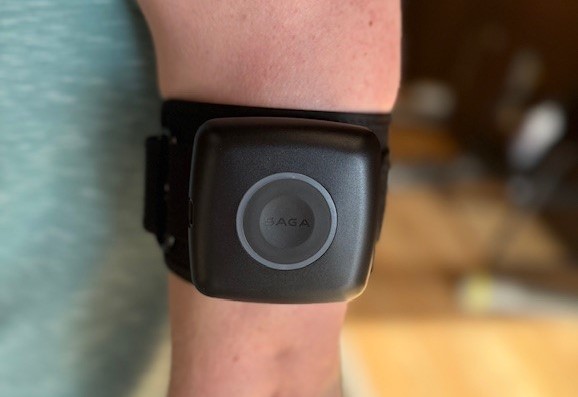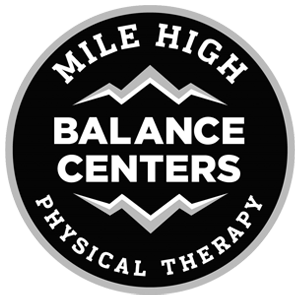- Schedule an Appointment
- (303) 856-3299
- info@milehighpt.com
Blood Flow Restriction (BFR) Therapy
Rebuild Strength and Speed Up Recovery with Blood Flow Restriction (BFR) Therapy
A science-backed approach to healing, strength, and performance—perfect for post-injury, surgery, or chronic pain recovery.
If you're recovering from an injury, surgery, or chronic weakness, but can't tolerate heavy lifting or high-impact activity, Blood Flow Restriction (BFR) Therapy offers a powerful alternative. It allows you to safely build strength and endurance using low-load exercise, helping you recover more efficiently and regain confidence in your movement.
At Mile High Physical Therapy, we use BFR Therapy to help patients maintain and rebuild muscle mass, improve joint stability, and promote faster healing—even in challenging recovery cases. Whether you’re an athlete, post-surgical patient, or active adult facing joint pain or muscle loss, BFR can help you return to full function—safely and effectively.
Why Choose BFR Therapy at Mile High Physical Therapy?
What Can BFR Therapy Help With?

BFR is effective for a wide range of conditions where traditional strengthening is limited due to pain, instability, or post-operative restrictions.
Whether you’re unable to lift heavy weights or just need a smarter way to regain strength without stress on the joints, BFR Therapy can help you recover smarter—not harder.
Our Proven Approach to Recovery Using BFR Therapy
At Mile High Physical Therapy, we don’t just apply BFR bands and call it a day—we combine it with expert guidance and tailored programming for results you can feel.
Step 1: Comprehensive Evaluation
We assess your injury, movement capacity, and healing status to determine if BFR is appropriate and how it fits into your recovery plan.
Step 2: Controlled BFR Application & Guided Exercise
With specialized cuffs placed on your arms or legs, we guide you through low-load exercises that safely stimulate strength and metabolic response—without heavy lifting or joint stress.
Step 3: Long-Term Strength & Confidence
As your strength builds, we progress your exercises and integrate other therapeutic techniques to ensure lasting results, mobility, and joint protection.
How Does BFR Therapy Work?
BFR Therapy involves applying a specialized cuff to the upper portion of a limb to partially restrict blood flow during exercise. This restriction causes the working muscles to fatigue faster and produce a greater training effect with much lighter loads than traditional resistance training.
Here’s what happens:
This makes BFR ideal for people who are early in recovery, can't tolerate traditional loading, or need to protect healing tissues—while still making measurable strength gains.
What Our Clients Say
“It makes the muscle feel like it’s working harder than it really is and it really optimizes the time we are spending together”
Heather W.
Is BFR Therapy Right for You?
If you’re unable to lift heavy weights, recovering from surgery, or simply looking to improve strength and function without added joint stress, BFR could be the answer.
This technique is safe, effective, and clinically supported. Our team at Mile High PT will guide you through every session to ensure you’re getting the benefits—without the risk. Whether you're rebuilding from injury or looking to level up your performance, BFR can help you recover faster and train smarter.
You don’t have to choose between safety and strength. With BFR Therapy, you can support healing, maintain progress, and return to doing what you love—confidently.
FAQ: Answers to Common Questions
What is Blood Flow Restriction (BFR) Therapy?
BFR Therapy is a technique where a specialized cuff is applied to a limb to partially restrict blood flow during low-load strength training. This stimulates muscle growth and recovery with significantly less strain on joints and tissues.
How does BFR Therapy work?
By restricting blood flow during light exercise, BFR creates a metabolic environment similar to high-intensity training. This leads to increased muscle activation, growth hormone release, and faster strength gains—without heavy lifting.
Who is BFR Therapy for?
BFR is ideal for: Post-surgical patients recovering from knee, shoulder, or hip procedures. Individuals with joint pain or arthritis who can’t tolerate heavy resistance. Athletes recovering from injury who want to maintain or regain strength. Anyone looking to build strength safely and efficiently
Is BFR Therapy safe?
Yes. When performed under the supervision of a trained professional, BFR Therapy is safe and evidence-based. The cuffs used are FDA-registered and pressure is carefully monitored for each individual.
Does BFR Therapy hurt?
You may feel some muscle fatigue and tightness during the session, but it should not be painful. Most patients describe it as an intense, yet tolerable workout with light weights.
How long does a typical session last?
BFR is usually performed during a regular PT session. The actual BFR portion typically lasts 15–20 minutes, depending on your treatment plan.
What are the benefits of BFR Therapy?
Faster strength gains with lower loads. Reduced joint stress during rehab. Improved muscle tone and endurance. Faster return to activity or sport. Great option for early post-op recovery
Is BFR Therapy covered by insurance?
BFR is often included as part of your personalized physical therapy program. While the technique itself may not be itemized for insurance reimbursement, it can be integrated into your treatment plan.
How soon will I notice results?
Most patients begin noticing improved strength and endurance within 2–4 weeks of consistent BFR sessions, depending on their condition and goals.
Is BFR Therapy right for me?
If you’re looking to build strength without heavy lifting, or if traditional rehab has been slow or limited due to pain, BFR might be exactly what you need. Schedule a free discovery visit to see if BFR Therapy is the right fit for your recovery plan.
